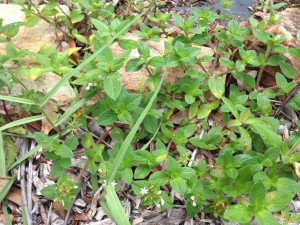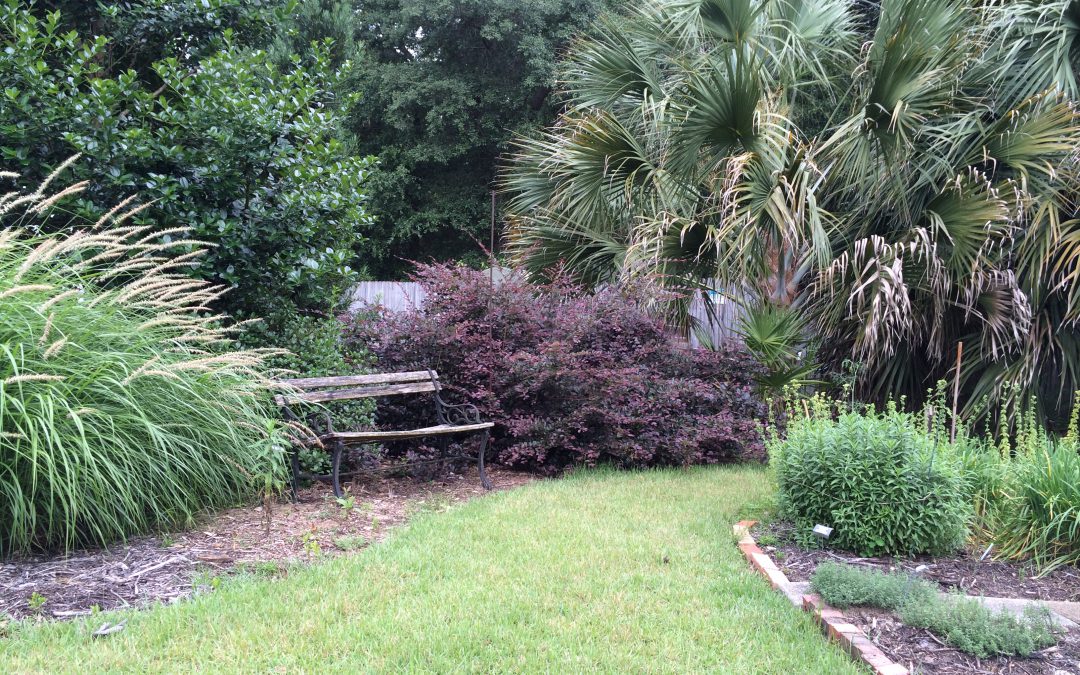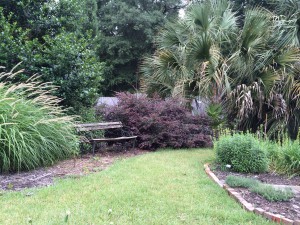by Mary Salinas | Feb 2, 2015
So often, homeowners wait until weeds have overtaken their lawns in mid-summer before looking for a course of action to control them. Unfortunately, when weeds get to maturity and start producing flowers and going to seed, they are usually quite difficult to control.
[important]The best strategy is to prevent the weeds from getting established in the first place![/important]

Florida pusley, an annual weed that can be controlled with preemergence herbicides. Photo credit: Mary Derrick UF/IFAS Extension.
When properly applied, a preemergence herbicide forms a chemical barrier on the surface of the soil that kills newly germinated seeds when they grow and contact that barrier. Be sure to follow label directions carefully as it is crucial to apply the correct amount and water it in correctly. The soil surface should not be disturbed after application to ensure that the chemical barrier remains intact.
Keep in mind that preemergence herbicides only prevent annual weeds! They do not control weeds that have already emerged.
In North Florida, the time to apply a preemergence herbicide to your turfgrass is coming soon. As a general rule, March 1 is an ideal time. Another indicator that the time is right is when the daytime temperatures reach 65°F-70°F for 4 to 5 consecutive days as that sustained warmth will prompt weed seeds to germinate. Oftentimes, this is also when azaleas or dogwoods start blooming and that can clue you into when to apply the herbicide. For best results, follow up with a second application in 6 to 9 weeks to control those seeds germinating later in the season.
Always follow the label instructions precisely when applying any herbicide! Ensure that you apply the product at the correct rate, that it is suitable for your specific turfgrass and situation, and that it is watered in correctly. For any pesticide, the label is the law!
If your lawn has problems with winter weeds, make a note on your calendar to apply a preemergence herbicide about October 1 in North Florida or when nighttime temperatures drop to 55°F-60°F for several consecutive days.
For more information on weed control in lawns:
Weed Management Guide for Florida Lawns
For general information on lawn care in Florida:
UF/IFAS Gardening Solutions: Lawns

by Roy Carter | Jun 23, 2014
Summertime is vacation time for people, not plants! While getting ready for that long awaited trip, it’s easy to forget about your lawn, landscape, vegetable garden and house plants. A little time spent preparing your leafy friends for your absence could save you needless worry and hours of extra work when you get back.

Prepare your landscape for your absence.
Photo by Mary Derrick, UF IFAS
A vacation may be relaxing and rejuvenating for you and your family, but it can be hazardous, even deadly, for your plants. Unless you make adequate preparations before leaving, you could return to vegetable disaster.
One of the first things you might do before leaving home is ask a neighbor to check your plants periodically while you’re gone. All plants need some care. During an extended vacation container grown plants require special attention and different species have different needs. Be sure you give your friend specific instructions for the care of each type.
If you can’t find someone to personally look after your plants while you’re away, there’s plenty you can do prior to departure to make sure you don’t come home to a limp landscape and sickly house plants. Outdoor container plants should be placed in a shady area to conserve moisture. Under a tree or on the north side of a building are good locations. A thick layer of mulch will help conserve moisture for landscape plantings. Mow your lawn just before leaving, cutting the grass a little closer than usual. An unkept lawn can encourage disease, and it’s a tell-tale sign that no one’s home.
Give lawn and landscape plants a heavy watering – especially recently planted beds, which will need extra moisture. Also, thoroughly spray or dust your plants to protect them from insects and diseases while you’re away. If you have flowering annuals, cut the blossoms before departing. If you don’t, they’ll soon stop blooming. Harvest all ripe or nearly ripe fruits and vegetables. Like flowers, they will continue to produce only if they’re picked frequently. Otherwise, they’ll go to seed.
Do a thorough job of weeding. If weeds are allowed to go to seed while you’re away, you can expect to encounter much more difficult problems later in the season – even next year – when the seeds sprout. Weeding eliminates a major source of competition for your landscape plants’ food and water which may be in short supply during your absence.
Plants kept indoors require special consideration. Before leaving home, place your house plants in a room which receives indirect sunlight. Direct exposure to the sun will dry the soil too quickly. Of course, you don’t want to put your plants in a room that’s too dark, either. Too little light will almost always result in leaf drop. And, just before you depart, be sure to water your house plants thoroughly. This is especially vital, because – unlike lawn grass and landscape ornamentals – house plants cannot benefit from any rain that may fall while you’re gone.
You’ll enjoy your vacation more by making sure your plants are well prepared for your absence.



